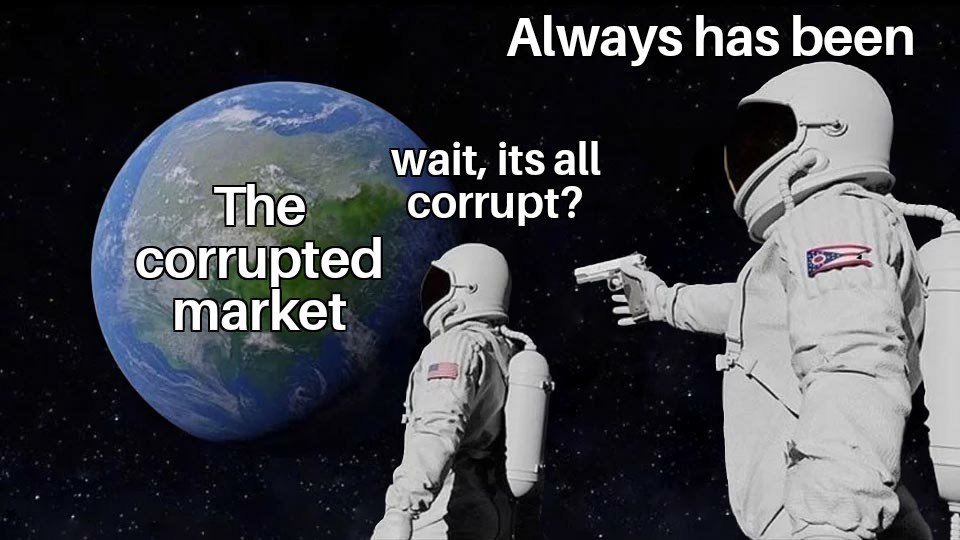2. First, a necessary clarification. Comparing the UK-EU FTA with the status quo is simply futile. Even the most ambitious FTA cannot – and it is not intended to – deliver the benefits of the EU Single Market and Customs Union.
3. There is only so much an FTA can deliver. No FTA could avoid creating a customs border. No FTA could waive origin rules. No FTA could avoid new non-tariff barriers. It is no mystery that UK Automotive would have preferred other options precisely because an FTA has limits.
4. To compare apples with apples, a fairer question is not whether the FTA is better than the Single Market - it isn’t - but whether this is the most ambitious FTA we could get for the sector. And I hope the rest of the thread can shed some lights on this point.
5. Having a deal is, in itself, a major positive. The idea that having an FTA or not having one makes little difference could be true for some sectors. This is certainly not the case for Automotive. Without an FTA, tariffs would certainly apply.
6. A deal gives the sector a chance to avoid them. True, business likes certainty. But the certainty of a 10% tariff on passenger cars and light commercial vehicles is a certainty I am glad we avoided.
7. I will never buy the argument that currency adjustments could have solved no-deal and related tariff impacts, no matter how many times the argument is repeated. Luckily, we’ll never know who is right.
8. However, the very idea that an FTA ENSURES all automotive products will be traded tariff-free has always been fundamentally WRONG. There is no such thing as a “tariff-free” FTA. Rather, tariffs apply by default, unless you can comply with rules of origin set by the new deal.
9. So, it is no surprise that the sector’s focus over the last year has been on securing workable rules of origin (ROO) for finished vehicles, engines & parts. Unreasonably strict origin requirements would have meant tariffs would apply on most products even with an FTA in place.
10. The British and European automotive industry had 3 essential asks on ROO:
- go beyond precedents, in particular for ROO on new-gen vehicles and related technology
- a phase-in period on origin requirements
- agree most liberal arrangements on the methodology used to meet ROO
11. Let’s start from where the deal is closer to the industry’s requests. The
@SMMT asked for a 9-year ROO phase-in period for all automotive goods. The deal provides a 6-years ROO phase-in for electrified vehicles, electric batteries and related components.
12. There are significant achievements here. The phase-in will allow EVs, plug-in hybrids (PHEVs) AND self-charging hybrid vehicles (HEVs) to benefit from relaxed origin requirements until January 2027. This applies also to electrified commercial vehicles and buses.
13. The deal deems 40% EU/UK content enough for electrified vehicles to avoid tariffs until the end of 2023. To my knowledge, this is the lowest phase-in threshold ever negotiated for finished vehicles in EU trade deals.
14. For 2024-2026, the requirement will be 45% before jumping to 55% in 2027…and here comes the first hurdle...
15. …the 55% end rule for all vehicles is in line with most recent EU precedents. The sector believed the time was right to make a further step and allow a 50% regional content requirement to get 0% tariff.
16. Is this a problem? Well…it depends. For internal combustion engines vehicles, the 55% regional content threshold will apply immediately on January 1. It is broadly considered workable, but if some ICE models can’t qualify, there will be little or no margin at all to adjust.
17. For electrified vehicles, a distinction is needed. HEVs will need to meet the 55% EU/UK content threshold from 2027. This is a significant win, because for weeks the fear was that HEVs would be treated like ICE vehicles. This is CRUCIAL to protect a large share of UK Auto.
18.But for PHEVS and EVs, not only these will need to meet the 55% threshold by 2027, but electric batteries incorporated into these vehicles will ALSO need to originate in the EU/UK from 2027 to get zero-tariff treatment. HEVs are exempted from this additional requirement.
19. Given that the value of a battery represents a vast proportion for the final value of PHEVs and EVS, this requirement almost seems redundant. Essentially, no PHEV or EV could meet the 55% threshold without incorporating battery. So, why include such additional requirement?
20.The answer is in the ROO agreed on batteries. Very relaxed rules apply on batteries…until 2024. For the next three years, there are three alternative rules for battery packs: add 30% of the value in the EU/UK, a change of tariff sub-heading or a processing rule.
21. The processing rule is exceptionally simple. No matter the origin of cells and modules, it will suffice that a pack is assembled in the UK or in the EU to get originating status – an unprecedented simplification.
22.For the first time ever, an EU FTA allows EU/UK PHEVs and BEVs to benefit from the deal. So, all good?
23. Unfortunately, no. Everything changes in 2024-26. Processing rules will no longer apply, and active cathode materials will need to originate in the UK/EU to make use of a change of tariff heading rule. Content requirements for batteries jump from 30% to 60%.
24. End rules on batteries applicable from 2027 are among the most demanding ever negotiated in an EU deal, with regional content requirement reaching a 70% threshold and the change of tariff heading rule unchanged, including on originating cathode materials.
25. In sum, from 2024, if cathode manufacturing does not take place in the EU/UK territory, battery accumulators are unlikely to meet origin requirements. Today, essentially all cathode manufacturing is carried-out in Asia…this gives the measure of the challenge ahead.
26. The rules on batteries clearly respect automotive asks and "free" trade priorities for the initial ROO staging period. But ROO from 2024 onwards are designed with industrial strategy objectives in mind. Will it work?
27. I am no fan of industrial strategy objectives set through trade policy. I find them ineffective, also in the way they could stifle innovation (what if, in 5 years, active cathode materials won’t be needed?). But…but…
28.…it is possible to meet high demands with everyone’s collaboration. It will also be the biggest test for the EU and UK’s to show they are serious about their environmental ambitions. One thing is to chose dates, another is to develop an EV regional supply chain.
29. Notably, there is a possibility to revise the end rule if the parties agree to do so. This is a win for the sector, but it will do little if some PHEVs and EVs will fail to get 0% tariff treatment in 2024-2026 if ROO on batteries are unattainable.
30. For other parts and components, the deal is in line with most ambitious precedents, so I’d expect suppliers to be in a good position to meet them…if only they are able to get on top of very complex issues such as origin requirements as quickly as needed.
31. And what about the thorny issue of cumulation? Well, the parties achieved a full cumulation arrangement. This is useful and will allow to use value added in the EU/UK on non-originating materials to meet value thresholds. Is this a win?
32. Yes, but only for the direction the negotiations took. In my opinion, full cumulation should have been a given from the start of talks…it wasn’t, for many reasons.
33.Probably, if the whole discussion on cumulation was approached with a more pragmatic attitude from both sides, we could have agreed something better. The UK’s ambitious ask to allow cumulation of all products originating from common trading partners prompted a strong "NO".
34. The Commission’s proposal to allow only bilateral cumulation was equally unreasonable and punitive. Agreeing on full cumulation from the start and limiting discussions on extended cumulation only to a small number of products could have changed the tone of the talks.
35. My biggest regret is the absence of an enabling clause similar to the EU-Japan EPA’s to at least talk of extended cumulation in the future. You could still do it if the political environment improves, but it’s highly unlikely in the medium-to-long-term.
36. What about proving origin? The possibility not to have a suppliers’ declaration at hand at the moment of export for 1 year is a major win for the UK and EU automotive sectors, both of which have fought hard to see such easement agreed.
37. Does this and other facilitations make the deal “easy” to implement for UK Automotive? No, not even remotely.
38. We have agreed something the sector can work with. There are some exceptional achievements we can be proud of when looking at comparable FTAs – the phase-in, the processing rule for batteries, the supplier’s declaration…
39. But the seismic shift from being part of the single market to a much looser trading relationship will be massive. I am confident that the innovative, creative, resilient UK Automotive sector will adjust and thrive, but not without costs.
40. In the end, my greatest hope is that I can go back to a time when speaking of rules of origin could catch the attention of few compliance specialists instead of catching media headlines.
41. If this happens, it will mean trade specialists and negotiators have done a good job. In our profession, we are doomed to be relevant only when there is a problem. Trade works when it is as seamless as possible – it was true yesterday, it will be true tomorrow.



























